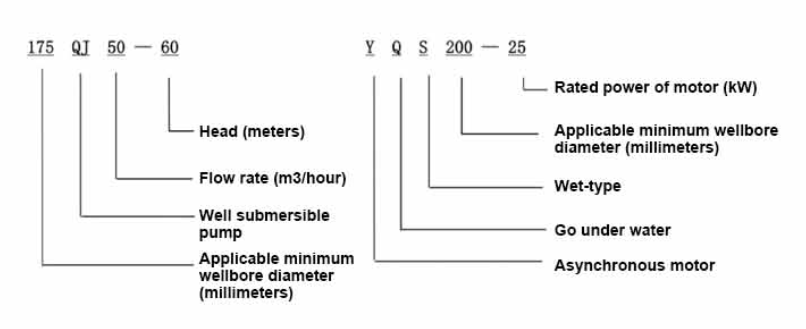Aug . 14, 2024 11:31 Back to list
Determining the Optimal Depth for a Submersible Well Pump Installation and Performance
How Deep is a Submersible Well Pump?
Submersible well pumps are a crucial component in various water supply systems, particularly for residential and agricultural use. Understanding how deep these pumps can operate is key to selecting the right system for your needs, as it directly influences water availability and system efficiency.
Submersible pumps are designed to function underwater, typically installed in deep wells to draw water from underground aquifers. Unlike jet pumps, which are more effective in shallow applications, submersible pumps are often used for wells that reach depths of 25 feet to over 1,000 feet. Their design allows for efficient operation at great depths, making them suitable for a wide range of applications.
Depth Capability
The depth a submersible well pump can reach depends on several factors, including the pump's design, power, and the well's characteristics. Most residential submersible pumps can usually handle depths of around 100 to 400 feet. For deeper wells, special high-capacity pumps are available that can function effectively at depths of 800 feet or more. In more extreme cases, some pumps designed for deep-water applications can even reach depths of 1,500 feet or greater.
The ability of the pump to handle such depths comes from its construction. Submersible pumps are sealed and designed to withstand the pressure of the water above them. As you go deeper into a well, the water pressure increases, which means the pump must be robust enough to handle these conditions.
Factors Influencing Pump Selection
When selecting a submersible pump for deep applications, several factors must be considered
how deep is a submersible well pump

1. Flow Rate This is the amount of water the pump can deliver per minute or hour. For deeper wells, having a sufficient flow rate is crucial, as it ensures that water can be pumped out at a usable volume.
2. Horsepower The power of the pump directly correlates with its ability to operate at greater depths. A higher horsepower pump is necessary for deeper wells, as it can provide the extra force required to lift water from lower depths.
3. Well Diameter The diameter of the well also affects pump choice. Standard submersible pumps are manufactured for various well diameters, typically ranging between 4 to 8 inches. The pump needs to fit comfortably inside the well casing while being capable of displacing water efficiently.
4. Water Quality The presence of sand, minerals, and other particulates can wear down the pump over time. It’s important to select a pump that is designed to handle the specific water quality encountered in your well. Opting for a high-quality pump can lead to longer lifespans and reduced maintenance needs.
5. Depth of Water Table The water table—the upper level of groundwater—can fluctuate seasonally or due to drought. Understanding the average depth of the water table in your area is essential for selecting a pump capable of continually providing water.
Conclusion
Submersible well pumps have revolutionized the way we access groundwater, enabling efficient water extraction from significant depths. By understanding the operational depth capabilities of these pumps, alongside factors such as flow rate, horsepower, well diameter, water quality, and the water table, you can make an informed decision for your specific water supply needs. Investing in the right submersible pump ensures reliable access to water, efficiency in operation, and longevity in use. Whether for home use or larger agricultural needs, the right pump can make all the difference.
-
Submersible Water Pump: The Efficient 'Power Pioneer' of the Underwater World
NewsJul.01,2025
-
Submersible Pond Pump: The Hidden Guardian of Water Landscape Ecology
NewsJul.01,2025
-
Stainless Well Pump: A Reliable and Durable Pumping Main Force
NewsJul.01,2025
-
Stainless Steel Submersible Pump: An Efficient and Versatile Tool for Underwater Operations
NewsJul.01,2025
-
Deep Well Submersible Pump: An Efficient 'Sucker' of Groundwater Sources
NewsJul.01,2025
-
Deep Water Well Pump: An Efficient 'Sucker' of Groundwater Sources
NewsJul.01,2025
-
 Submersible Water Pump: The Efficient 'Power Pioneer' of the Underwater WorldIn the field of hydraulic equipment, the Submersible Water Pump has become the core equipment for underwater operations and water resource transportation due to its unique design and excellent performance.Detail
Submersible Water Pump: The Efficient 'Power Pioneer' of the Underwater WorldIn the field of hydraulic equipment, the Submersible Water Pump has become the core equipment for underwater operations and water resource transportation due to its unique design and excellent performance.Detail -
 Submersible Pond Pump: The Hidden Guardian of Water Landscape EcologyIn courtyard landscapes, ecological ponds, and even small-scale water conservancy projects, there is a silent yet indispensable equipment - the Submersible Pond Pump.Detail
Submersible Pond Pump: The Hidden Guardian of Water Landscape EcologyIn courtyard landscapes, ecological ponds, and even small-scale water conservancy projects, there is a silent yet indispensable equipment - the Submersible Pond Pump.Detail -
 Stainless Well Pump: A Reliable and Durable Pumping Main ForceIn the field of water resource transportation, Stainless Well Pump has become the core equipment for various pumping scenarios with its excellent performance and reliable quality.Detail
Stainless Well Pump: A Reliable and Durable Pumping Main ForceIn the field of water resource transportation, Stainless Well Pump has become the core equipment for various pumping scenarios with its excellent performance and reliable quality.Detail
